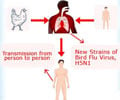The educational quality of seasonal influenza videos on YouTube was evaluated, and most of the information provided was by professional societies and health-care providers.

‘Most of the seasonal influenza videos on YouTube are provided by professional societies and health-care providers to help educate patients.’





With patients regularly turning to the internet for health advice, a group of researchers aimed to evaluate the educational quality of seasonal influenza videos on the user-generated, video-sharing platform, YouTube.Researchers conducted a keyword search of "seasonal influenza" from January 28 to February 5, 2017. The top most viewed videos that appeared in the search results were included and analyzed for video characteristics, source, and content.
The source of videos was then classified as health-care provider, alternative-medicine provider, patient and/or patients' parents, company, media, or professional society.
Utilizing the latest CDC guidelines, a scoring system was created to evaluate the quality (-10 to +40).
Negative points were provided for misleading information. Ten blinded reviewers scored each video independently.
Advertisement
The most common type of video source was professional societies (38.3%) and least represented was alternative medicine provider (1.3%). Among the six video sources, the mean scores showed a statistically significant difference from each other (p<0.001).
Advertisement
"This study confirmed that most YouTube videos on seasonal influenza are provided by professional societies and health-care providers, with over half of the videos attempting to educate patients," says Dr. Lakshmi Kallur, lead researcher and resident physician in the Department of Internal Medicine at East Tennessee State University's Quillen College of Medicine, "these videos, although containing accurate information, did not fulfill our criteria as far as educating patients thoroughly."
Source-Eurekalert












